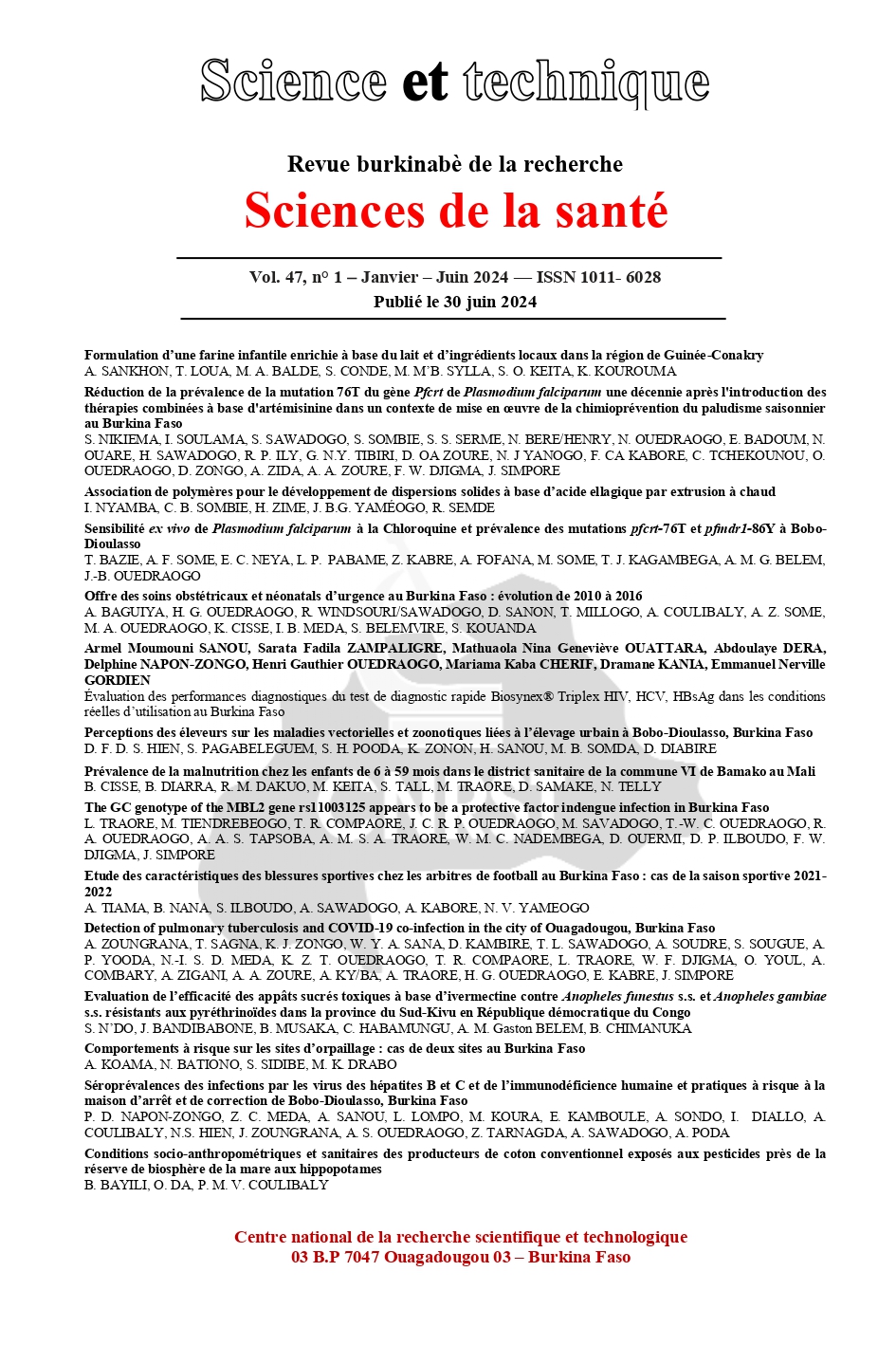Emergency obstetric and newborn care utilization in Burkina Faso: trend from 2010 to 2016
Keywords:
SONU,, fonction,, Burkina, Obstetric,, neonatalAbstract
Introduction: The aim of this study was to describe changes in the provision of basic emergency obstetric and newborn care (EmONC) signal functions in health facilities (referral hospitals and first-level health centres) in Burkina Faso from 2010 to 2016.
Methods: We conducted a secondary analysis of data from cross-sectional assessments of EmONC needs carried out in Burkina Faso in 2010, 2014 and 2016 in all health facilities.
Results: Our results showed that the proportion of facilities that administered parenteral antibiotic (70.3%, n=1628 in 2010 to 91.8%, n=422 in 2016, p<0.001), uterotonic (93.6%, n=1628 in 2010 to 98.9%, n=422 in 2016, p<0.001), and anticonvulsant (38.1%, n=1628 in 2010 to 67%, n=422 in 2016, p<0.001) increased over time. Meanwhile, the percentage of facilities that performed manual vacuum aspiration or curettage (66.5%, n=1628 in 2010 to 45.4%, n=422 in 2016, p<0.001) and assisted vaginal delivery (2%, n=1628 in 2010 ; 4.4% with n= 780 in 2014 and 3%, n=422 in 2016, p<0.001) increased from 2010 to 2014, and decreased afterwards.
Conclusion: Assisted vaginal delivery was the least performed signal function. The inclusion of this function in EmONC health facilities assessment criteria should be revised.
Downloads
Published
How to Cite
Issue
Section
License
Copyright (c) 2024 Sciences de la Santé

This work is licensed under a Creative Commons Attribution 4.0 International License.

